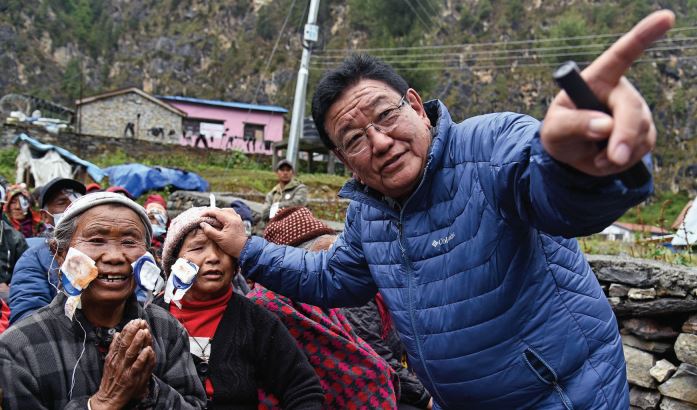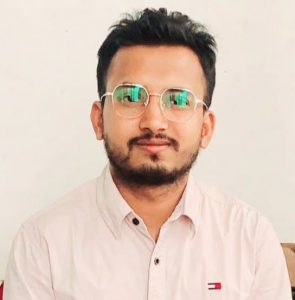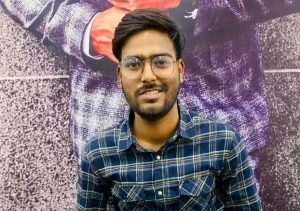Completed MBBS at King George Medical University in Lucknow, India
Completed MD in Ophthalmology from the All-India Institute of Medical Sciences (AIIMS)
Developed a new intraocular lens that could be produced cheaply in 1995
Husband to Nanda Ruit
Father to Serabla Ruit, Sagar Ruit and Satenla Ruit
 I was born in a remote mountain village of Taplejung district. The village had no access to electricity, healthcare and education, so you could imagine how grim the situation was for the people. Though I belonged to a farming family, my parents made sure that I got educated. I had to walk a long distance every day to reach my school in Darjeeling, India.
I was the second of my parents’ four children, but all my siblings died while they were still young. My older brother passed away at the age of three during a diarrhea outbreak in my village. The sister below me died of hyperthermia when she was eight, and my youngest sister succumbed to tuberculosis at fifteen.
The passing of my youngest sister was the most difficult one for me. She had been my best friend and the one closest to my heart. My family was devastated because they couldn’t afford for her treatment.
The death of my youngest sibling is the reason why I became a doctor. I wanted to devote my life to helping the poor who lack access to quality healthcare.
I graduated from Siddhartha Vanasthali School in Kathmandu, Nepal, in 1969, and got a scholarship to study medicine and surgery at King George Medical College in Lucknow, India from 1972 to 1976. In 1984, I moved to Delhi to study at the All-India Institute of Medical Sciences to become an ophthalmologist. And from 1987 to 1988, I worked under renowned Australian ophthalmologist Fred Hollows as part of a 14-month residency program at Sydney’s Prince of Wales Hospital.
Dr Hollows was impressed by my hard work and motivated me to keep getting better.
I researched about the health issues in Nepal and realized that visual impairments, particularly blindness as a result of cataracts, have a 62.2 percent incidence rate among patients over the age of fifty, and that seven youngsters lose their sight every day. In Nepal, refractive abnormalities are frequent eye illnesses that cause blindness in youngsters, and every year, thousands of individuals go blind as a result of cataracts.
The World Health Organization estimates that 90 percent of the world’s blind population comes from low-income households. There are over 460,000 people in need of eye health care services, and many of them have to travel long distances, often through bad weather, to get the care they need.
I was born in a remote mountain village of Taplejung district. The village had no access to electricity, healthcare and education, so you could imagine how grim the situation was for the people. Though I belonged to a farming family, my parents made sure that I got educated. I had to walk a long distance every day to reach my school in Darjeeling, India.
I was the second of my parents’ four children, but all my siblings died while they were still young. My older brother passed away at the age of three during a diarrhea outbreak in my village. The sister below me died of hyperthermia when she was eight, and my youngest sister succumbed to tuberculosis at fifteen.
The passing of my youngest sister was the most difficult one for me. She had been my best friend and the one closest to my heart. My family was devastated because they couldn’t afford for her treatment.
The death of my youngest sibling is the reason why I became a doctor. I wanted to devote my life to helping the poor who lack access to quality healthcare.
I graduated from Siddhartha Vanasthali School in Kathmandu, Nepal, in 1969, and got a scholarship to study medicine and surgery at King George Medical College in Lucknow, India from 1972 to 1976. In 1984, I moved to Delhi to study at the All-India Institute of Medical Sciences to become an ophthalmologist. And from 1987 to 1988, I worked under renowned Australian ophthalmologist Fred Hollows as part of a 14-month residency program at Sydney’s Prince of Wales Hospital.
Dr Hollows was impressed by my hard work and motivated me to keep getting better.
I researched about the health issues in Nepal and realized that visual impairments, particularly blindness as a result of cataracts, have a 62.2 percent incidence rate among patients over the age of fifty, and that seven youngsters lose their sight every day. In Nepal, refractive abnormalities are frequent eye illnesses that cause blindness in youngsters, and every year, thousands of individuals go blind as a result of cataracts.
The World Health Organization estimates that 90 percent of the world’s blind population comes from low-income households. There are over 460,000 people in need of eye health care services, and many of them have to travel long distances, often through bad weather, to get the care they need.
 So, Dr Hollows and I imagined a world where people in impoverished nations could get top-notch eye treatment. In our search for an alternative method of treating cataracts, we developed a novel intraocular lens that could be mass-produced at a much-reduced cost. With this inexpensive lens, a cataract patient could be treated in just five minutes.
Realizing that producing these lenses locally would significantly reduce the cost of treatment, we began developing plans to build a factory to produce the eye lenses necessary for cataract surgery. Upon my return to Nepal, I participated in the development of the Nepal Eye Program and contributed to a comprehensive epidemiological study of blindness in the country. In Nepal, I was the first to use intraocular lens implants for cataract surgery.
At the time, traditional practitioners and the majority of old physicians alleged that my surgical approach presented threats to patients’ eyes. But I persisted and was able to convince my critics of my innovative method of treatment. Also, in 1989, WHO didn’t allow my team to conduct cataract surgeries, saying that these things need a high clinical trial. But to date, not a single patient has complained about our lens.
In collaboration with a team of young Nepali ophthalmologists and philanthropists, I established the Tilganga Eye Centre, which is supported by the Nepali program for eye health care and the Fred Hollows Foundation. Our plant opened in June 1995, a year after the passing of my mentor and friend, Dr Hollows. I was later appointed the medical director of Tilganga Ophthalmological Institute. The institute is a key partner of the Fred Hollows Foundation, and it is now a global medical institution led by my team, who has provided free care to over 120,000 people with treatable blindness.
We also organized a mobile eye clinic in Nepal’s remote mountain regions to perform free surgeries on people in need.
With the objective of providing free surgery to the poor and needy, my team has set up more than 200 eye camps in the remote areas of Nepal. Our surgical approach has helped cut in half the rate of treatable blindness in Nepal over the past three decades. We have also trained over 650 doctors in the fight against preventable blindness around the world, and as a result, the number of successful eye surgeries performed worldwide has now surpassed 35m.
About 6,000 operations are performed successfully each year at our institute. Mobile hospitals were so effective that their success was shared with countries including Bhutan, Thailand, Myanmar, Mongolia, Pakistan, North Korea, Ethiopia, Bangladesh, China, and India. And my team has set a target of screening 1m people and treating 300,000–500,000 patients with curable blindness by 2030.
About him
Samarjeet Shah (Student)
So, Dr Hollows and I imagined a world where people in impoverished nations could get top-notch eye treatment. In our search for an alternative method of treating cataracts, we developed a novel intraocular lens that could be mass-produced at a much-reduced cost. With this inexpensive lens, a cataract patient could be treated in just five minutes.
Realizing that producing these lenses locally would significantly reduce the cost of treatment, we began developing plans to build a factory to produce the eye lenses necessary for cataract surgery. Upon my return to Nepal, I participated in the development of the Nepal Eye Program and contributed to a comprehensive epidemiological study of blindness in the country. In Nepal, I was the first to use intraocular lens implants for cataract surgery.
At the time, traditional practitioners and the majority of old physicians alleged that my surgical approach presented threats to patients’ eyes. But I persisted and was able to convince my critics of my innovative method of treatment. Also, in 1989, WHO didn’t allow my team to conduct cataract surgeries, saying that these things need a high clinical trial. But to date, not a single patient has complained about our lens.
In collaboration with a team of young Nepali ophthalmologists and philanthropists, I established the Tilganga Eye Centre, which is supported by the Nepali program for eye health care and the Fred Hollows Foundation. Our plant opened in June 1995, a year after the passing of my mentor and friend, Dr Hollows. I was later appointed the medical director of Tilganga Ophthalmological Institute. The institute is a key partner of the Fred Hollows Foundation, and it is now a global medical institution led by my team, who has provided free care to over 120,000 people with treatable blindness.
We also organized a mobile eye clinic in Nepal’s remote mountain regions to perform free surgeries on people in need.
With the objective of providing free surgery to the poor and needy, my team has set up more than 200 eye camps in the remote areas of Nepal. Our surgical approach has helped cut in half the rate of treatable blindness in Nepal over the past three decades. We have also trained over 650 doctors in the fight against preventable blindness around the world, and as a result, the number of successful eye surgeries performed worldwide has now surpassed 35m.
About 6,000 operations are performed successfully each year at our institute. Mobile hospitals were so effective that their success was shared with countries including Bhutan, Thailand, Myanmar, Mongolia, Pakistan, North Korea, Ethiopia, Bangladesh, China, and India. And my team has set a target of screening 1m people and treating 300,000–500,000 patients with curable blindness by 2030.
About him
Samarjeet Shah (Student)
 As a medical student, I have great admiration for Dr Ruit. He is a true inspiration for medical professionals, especially those who work in low-income areas, because of his innovative approach to cataract surgery. His work has not only helped improve the lives of countless individuals, but it has also inspired other doctors and researchers to explore new and innovative ways to provide healthcare to people in need. Dr Ruit’s achievements serve as a reminder to medical students like me of the incredible impact that we can make in the world if we commit ourselves to serving others.
Aalok Mishra (Student)
As a medical student, I have great admiration for Dr Ruit. He is a true inspiration for medical professionals, especially those who work in low-income areas, because of his innovative approach to cataract surgery. His work has not only helped improve the lives of countless individuals, but it has also inspired other doctors and researchers to explore new and innovative ways to provide healthcare to people in need. Dr Ruit’s achievements serve as a reminder to medical students like me of the incredible impact that we can make in the world if we commit ourselves to serving others.
Aalok Mishra (Student)
 As a Nepali medical student studying in Bangladesh, I have to interact with the local patients here. When they know that I’m from Nepal, most of the patients ask me about Tilganga Hospital and its service. It is due to Dr Ruit’s hard work and service that he has made Nepal proud around the world. A Nepali doctor doing such inspirational works definitely helps medical students like me.
Abhinash Jha (Student)
As a Nepali medical student studying in Bangladesh, I have to interact with the local patients here. When they know that I’m from Nepal, most of the patients ask me about Tilganga Hospital and its service. It is due to Dr Ruit’s hard work and service that he has made Nepal proud around the world. A Nepali doctor doing such inspirational works definitely helps medical students like me.
Abhinash Jha (Student)
 Dr Ruit is an inspiration for medical students because he demonstrated the meaning of empathy, which is a must for any medical student. He proved that a good doctor must be a good human being. For medical students, he is the moral guideline as he has emphasized the basics of humanity through his medical service. Every eye doctor wants to be like him, which shows his greatness.
Dr Ruit is an inspiration for medical students because he demonstrated the meaning of empathy, which is a must for any medical student. He proved that a good doctor must be a good human being. For medical students, he is the moral guideline as he has emphasized the basics of humanity through his medical service. Every eye doctor wants to be like him, which shows his greatness.











